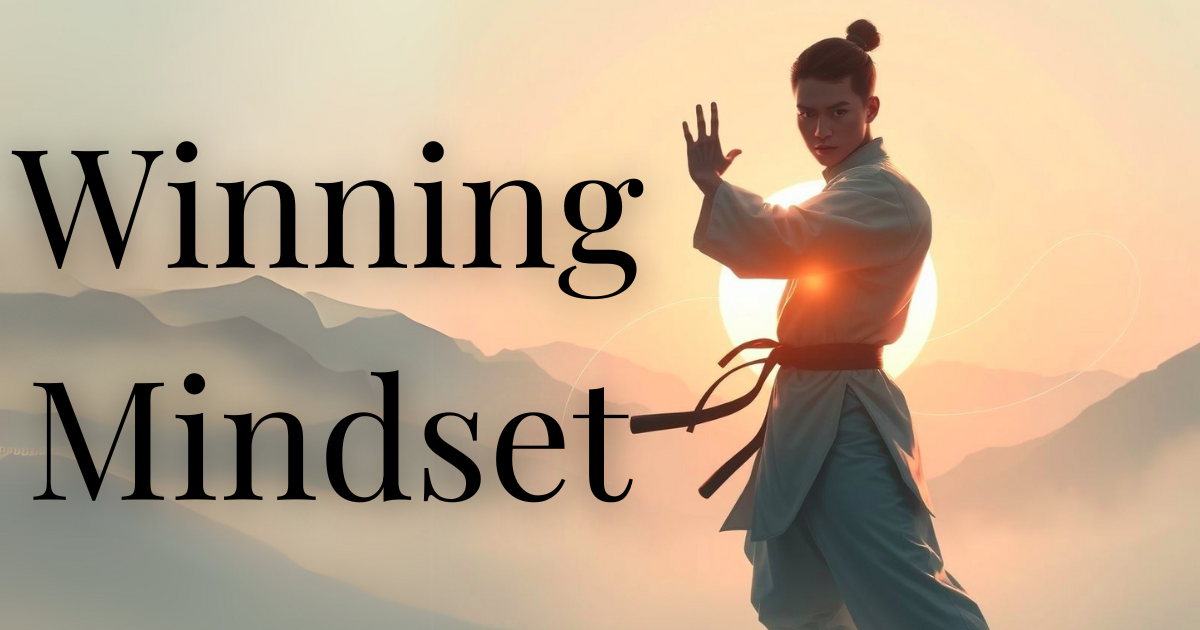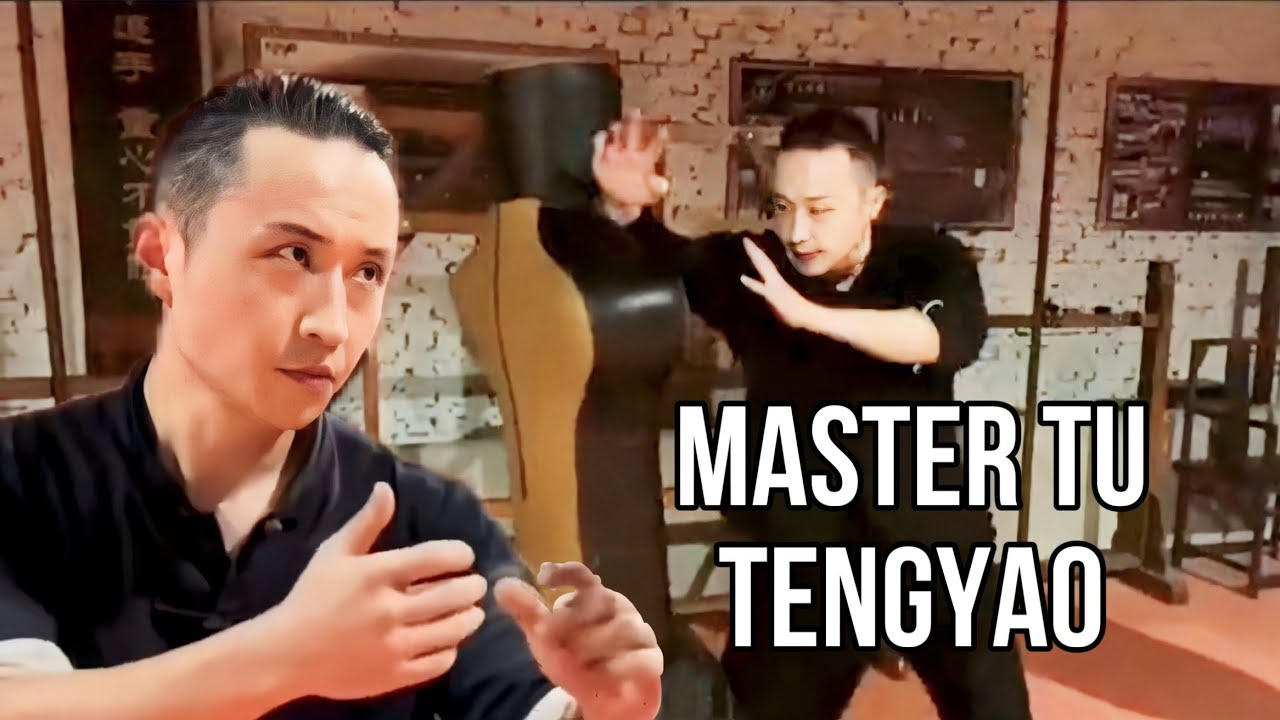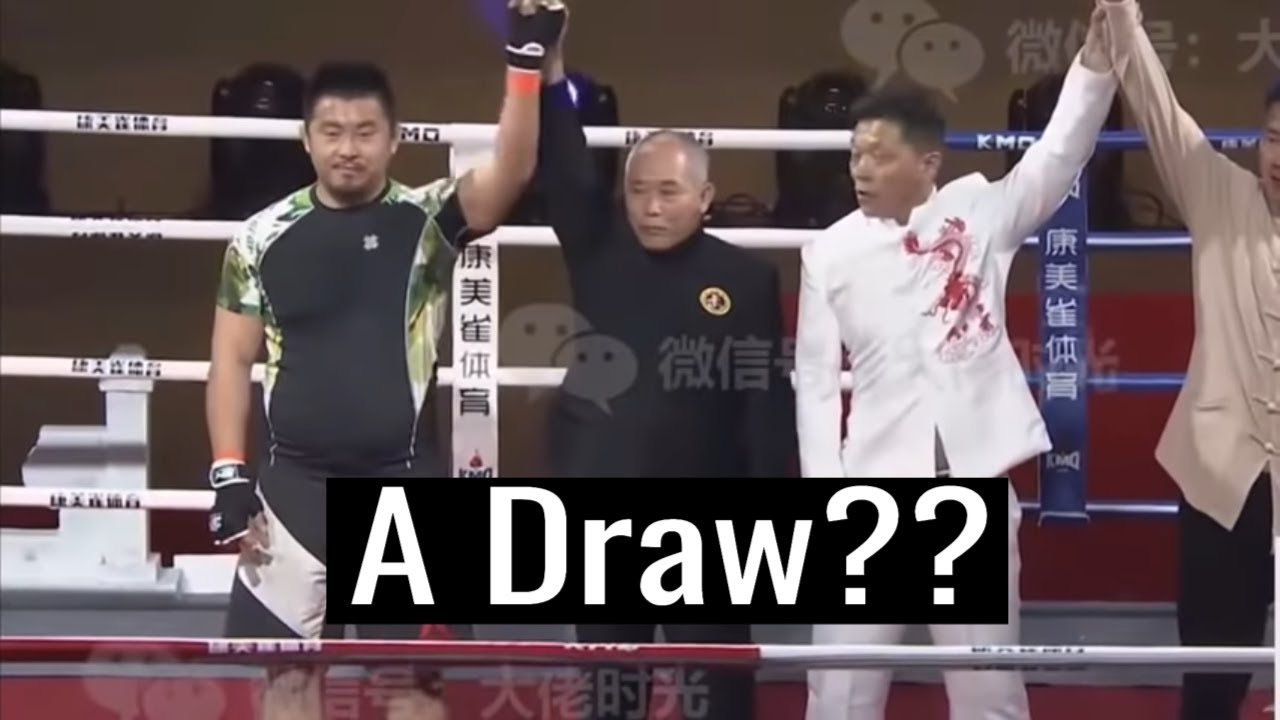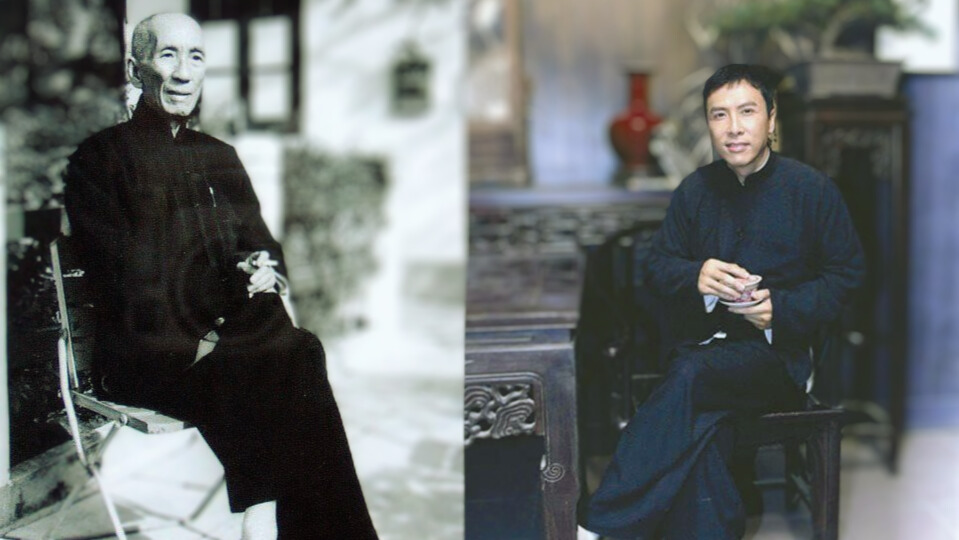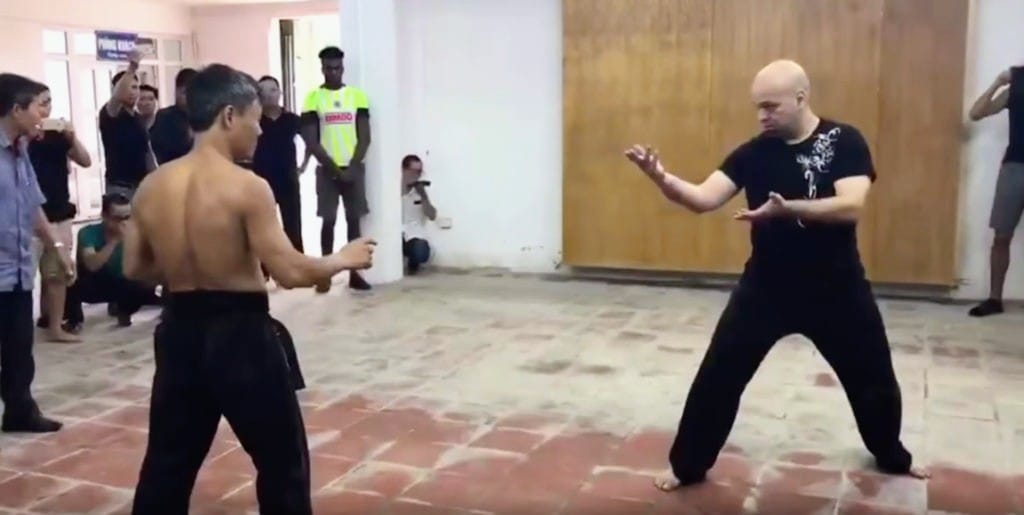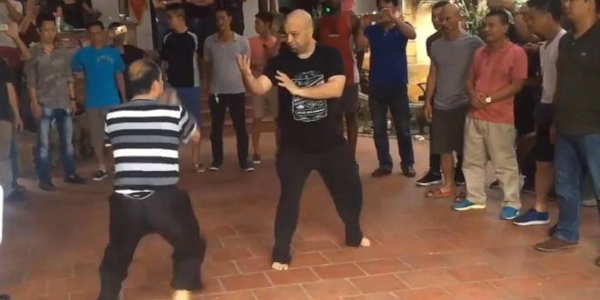10 Wing Chun Techniques You Can't Afford to Miss
Reading time: 10 minutes
Are you ready to become a kung fu master? Then, you can't miss these 10 amazing Wing Chun techniques that will help you unleash your inner martial artist and take your skills to the next level.
1. Lin Wan Kuen
The Wing Chun Chain Punch, also known as Lin Wan Kuen, is a signature technique that showcases the art's emphasis on speed, efficiency, and close-range combat. Characterized by a rapid-fire series of straight punches, the Chain Punch allows practitioners to overwhelm their opponents with a relentless barrage of strikes.

With proper body alignment and fluid motion, Wing Chun practitioners can generate impressive power and maintain constant offensive pressure. The Chain Punch not only demonstrates the practicality and effectiveness of Wing Chun but also highlights the importance of precision and economy of motion in self-defense situations.
2. Siu Nim Tau
Next, let's talk about the "Siu Nim Tao" form, which is the foundation of Wing Chun. It may look simple, but it's the key to mastering the art of kung fu. As the saying goes, "you gotta crawl before you can chain-punch."

Siu Nim Tau, often translated as "The Little Idea" or "Small Thought," is the first and most fundamental form of Wing Chun. It serves as the foundation upon which all other techniques and principles are built. Siu Nim Tau is designed to instill proper body structure, stance, and basic hand movements in practitioners, ensuring a solid base for more advanced skills.
This form emphasizes the importance of relaxation, mindfulness, and precision, teaching students to generate power through the economy of motion and coordinated body mechanics. By mastering Siu Nim Tau, Wing Chun practitioners develop a deep understanding of the art's core principles and lay the groundwork for their journey toward becoming proficient martial artists.
3. Lap Sao
Moving on, we have the "Lap Sao" technique, which translates to "grabbing hand." If you're ever in a sticky situation, this move will help you take control of your opponent's arms and leave them wondering how they got disarmed so easily.
Lap Sao, or "Pulling Hand," is a fundamental technique in Wing Chun that focuses on redirecting and controlling an opponent's movements. This skill is essential in Wing Chun training as it teaches practitioners how to neutralize incoming attacks and create openings for counter-strikes. Lap Sao is often practiced in coordination with other techniques, such as punches or low kicks, to develop a fluid and effective close-range combat style.

By incorporating Lap Sao into their repertoire, Wing Chun practitioners enhance their ability to manipulate an opponent's force, maintain control during confrontations, and exploit weaknesses in the opponent's defense. The utility of Lap Sao in Wing Chun training lies in its emphasis on sensitivity, timing, and adaptability – crucial elements for success in any self-defense situation.
4. Bong Sao
Up next, we have the "Bong Sao" technique, also known as the "wing arm" move. It's like having a pair of wings that deflect your opponent's attacks, leaving them feeling like they're trying to punch a cloud.
Bong Sao, or "Wing Arm," is a vital technique in Wing Chun that emphasizes deflection and redirection of an opponent's force. This unique and versatile skill plays a crucial role in Wing Chun training as it allows practitioners to effectively protect themselves from various attacks without relying on brute strength. Bong Sao is characterized by its distinctive elbow-up and palm-down position, which facilitates the interception of incoming strikes while simultaneously preparing for counterattacks.
When applied correctly, Bong Sao enables Wing Chun practitioners to maintain a superior position in close-range combat and swiftly transition between defensive and offensive maneuvers. The utility of Bong Sao in Wing Chun training lies in its focus on sensitivity, structure, and adaptability, fostering the development of a fluid, efficient, and well-rounded martial artist.
5. Tan Sao
The "Tan Sao" technique is another must-know move in Wing Chun. It's all about redirecting your opponent's force and turning their attack against them. It's like being a Jedi, except with more fists and fewer lightsabers.
Tan Sao, or "Spreading Hand," is an essential technique in Wing Chun that exemplifies the art's emphasis on simultaneous defense and attack. Integral to Wing Chun training, Tan Sao teaches practitioners to effectively deflect incoming strikes while maintaining the readiness to launch counterattacks. The technique involves extending the arm forward with the palm facing up, creating a stable structure that allows for efficient energy redirection.
By skillfully applying Tan Sao, Wing Chun practitioners can neutralize their opponent's force and open up opportunities for quick, decisive strikes. The utility of Tan Sao in Wing Chun training lies in its focus on sensitivity, body mechanics, and adaptability, helping students develop a dynamic and powerful self-defense repertoire that capitalizes on their opponent's movements and vulnerabilities.
6. Pak Sao
If you want to take your defense to the next level, then the "Pak Sao" technique is your go-to move. This move involves using your open palm to deflect your opponent's punches and leave them wondering where their punch went.


Pak Sao, or "Slapping Hand," is a fundamental technique in Wing Chun that demonstrates the art's principle of efficiency in both defense and offense. As an integral part of Wing Chun training, Pak Sao equips practitioners with the ability to effectively deflect or redirect incoming attacks, creating openings for counter-strikes. The technique involves using the palm of the hand to slap away an opponent's strike, while simultaneously closing the gap to deliver a powerful response.
By mastering Pak Sao, Wing Chun practitioners can swiftly neutralize threats and maintain control in close-range combat situations. The utility of Pak Sao in Wing Chun training lies in its emphasis on speed, sensitivity, and adaptability, cultivating a versatile martial artist capable of responding to various attacks with precision and agility.
7. Kau Sao
Next, we have the "Kau Sao" technique, which is all about using your elbow to strike your opponent with devastating force. It's like having a hammer in your elbow, except you won't need to wear a hard hat.
Kau Sao, or "Detaining Hand," is an important technique in Wing Chun that showcases the art's focus on control and adaptability during close-range combat. As a key aspect of Wing Chun training, Kau Sao equips practitioners with the ability to effectively manage their opponent's movements, neutralize attacks, and create opportunities for counter-strikes.

The technique involves using the hand and forearm to guide, trap, or redirect an opponent's limb, disrupting their balance and limiting their offensive capabilities. By mastering Kau Sao, Wing Chun practitioners can maintain a dominant position in confrontations and swiftly exploit vulnerabilities in their opponent's defense.
The utility of Kau Sao in Wing Chun training lies in its emphasis on sensitivity, timing, and technique, fostering the development of a martial artist who can expertly navigate the complexities of close-quarters combat.
8. Chum Kiu
The "Chum Kiu" form is another essential technique in Wing Chun. It's all about developing footwork and body mechanics to create a solid foundation for your kung fu skills. It's like building a house, except you get to break boards with your bare hands.
Chum Kiu, or "Seeking the Bridge," is the second form in Wing Chun and plays a critical role in advancing a practitioner's skills and understanding of the art. As a vital part of Wing Chun training, Chum Kiu builds upon the foundation established by Siu Nim Tau, introducing practitioners to new techniques and concepts, including footwork, body rotation, and coordination between upper and lower body movements. The form emphasizes the importance of bridging the gap between oneself and an opponent, enabling practitioners to engage in close-range combat effectively.
By mastering Chum Kiu, Wing Chun practitioners develop a deeper appreciation for the art's principles, enhance their ability to generate power through body mechanics, and refine their skills in both offense and defense. The utility of Chum Kiu in Wing Chun training lies in its focus on fluidity, balance, and adaptability, fostering the growth of a well-rounded martial artist capable of confidently navigating the complexities of close-quarters combat.
9. Gum Sao
The "Gum Sao" technique is a powerful move that involves attacking your opponent's centerline, leaving them vulnerable to your strikes. It's like a game of Jenga, except you're pulling out your opponent's blocks.
Gum Sao, or "Pressing Hand," is a crucial technique in Wing Chun that highlights the artist's commitment to maintaining control and stability during close-range engagements. As a core component of Wing Chun training, Gum Sao empowers practitioners to effectively neutralize incoming attacks, protect their centerline, and set up opportunities for counter-strikes. The technique involves using the hand and forearm to apply downward pressure on an opponent's limb, disrupting their structure and limiting their ability to continue attacking.
By mastering Gum Sao, Wing Chun practitioners can maintain a strong defensive position while actively seeking openings for decisive offensive maneuvers. The utility of Gum Sao in Wing Chun training lies in its focus on sensitivity, body mechanics, and strategic thinking, cultivating a martial artist who can confidently navigate high-pressure combat situations with poise and precision.
10. Lop Sao

Last but not least, we have the "Lop Sao" technique, which is all about trapping your opponent's arms and leaving them open to a devastating counterattack. It's like playing chess, except you get to punch your opponent in the face.
Lop Sao, or "Grasping Hand," is a key technique in Wing Chun that accentuates the art's emphasis on simultaneous offense and defense during close-range combat. As an essential part of Wing Chun training, Lop Sao equips practitioners with the ability to effectively control and manipulate their opponent's movements, creating openings for swift and powerful counter-strikes. The technique involves using the hand to grasp and pull an opponent's limb, often in conjunction with a simultaneous attack to exploit the opening created.
By mastering Lop Sao, Wing Chun practitioners can maintain a dynamic and assertive presence in confrontations, seamlessly transitioning between defensive and offensive maneuvers. The utility of Lop Sao in Wing Chun training lies in its focus on sensitivity, coordination, and adaptability, fostering the development of a martial artist capable of overcoming various challenges in close-quarters combat with skill and confidence.
Thank you. Your comment will be approved shortly.
Comments
Thank you. Your comment will be approved shortly.
Thank you. Your comment will be approved shortly.
Thank you. Your comment will be approved shortly.
Thank you. Your comment will be approved shortly.
Thank you. Your comment will be approved shortly.














